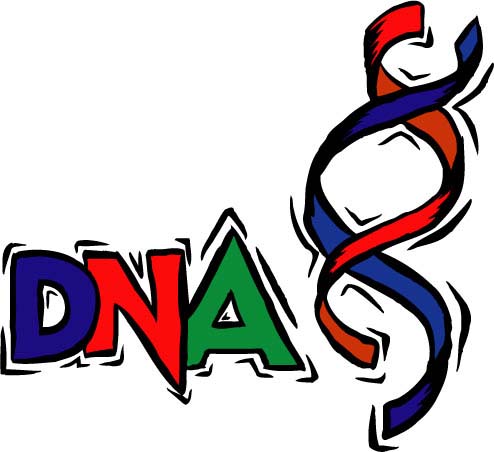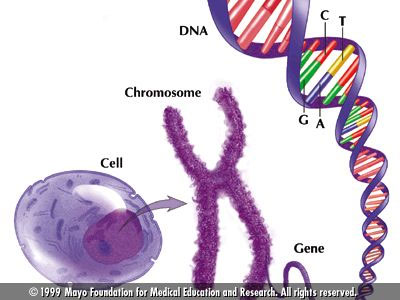

|
|
|
|||||||
|
|
||||||||
|
What is the structure and chemical composition of DNA?
Procedures: 1. Each partner will be given two molecules called nucleotides. DNA is made of repeating units called nucleotides. Look at each nucleotide and answer the following questions. A. What are the THREE common parts of the nucleotide? B. What is the ONE part of the nucleotide that differs among the four different nucleotides in your group? C. List the four different kinds of nucleotides. 2. Manipulate the nucleotide pieces until they fit together like a puzzle. Your DNA model should resemble a ladder when you have finished. D. Use the letters to show the sequence of bases in the DNA molecule your group constructed. Begin at the top left side of your molecule. __________________ compliments __________________ __________________ compliments __________________
Part II: Discovering DNA structure video. Procedures: 1. You and your partner will be viewing a video and answering a series of questions based on the video. 2. Read the questions prior to viewing the video. 3. Click the link of the video you have been assigned and answer the following questions. A. Where in the cell is DNA found? B. What is the shape of a DNA molecule and what does it resemble? C. What does DNA stand for? D. What do the letters A, T, G, and C stand for? E. How many strands make up a DNA molecule? F. How do the letters A, T, G, and C tell the cell what to do? Part III: Discovering DNA - Edible DNA. Using gumballs and toothpicks, students will build and manipulate a model of DNA in order to learn its structure. Objectives: 1. Students will learn and demonstrate the structure and function of DNA, an essential component of any cell. 1. Use a diagram of DNA and the key below to build four different nucleotides (figure 1): See below Orange slice = deoxyribose sugar Purple gumballs = Thymine nitrogen base White gumballs = phosphate group Yellow gumballs = Cytosine nitrogen base Plain toothpicks = chemical bonds Red gumballs = Adenine nitrogen base Green gumballs = Guanine nitrogen base Figure 1: One Nucleotide 2. Repeat step 1. Now, combine the nucleotides to start forming a DNA molecule. DNA has the shape of a twisted ladder or spiral staircase. The geometric shape is called a double helix. You will make a "ladder" that has 4 "rungs" or steps. Remember, from the previous activities what nitrogen bases are complimentary. Combine the nucleotides using the example below (figure 2): See below
Figure 2: Two nucleotides bonded together between the nitrogen bases (a "step") 1. Continue to build the "ladder" combing nucleotides as in step 2 2. Once you have built the "ladder" that has used all 4 nucleotides made in steps 1 and 2, show the DNA molecule to the teacher.
|
|
|
|
|
||
| Site Map |



